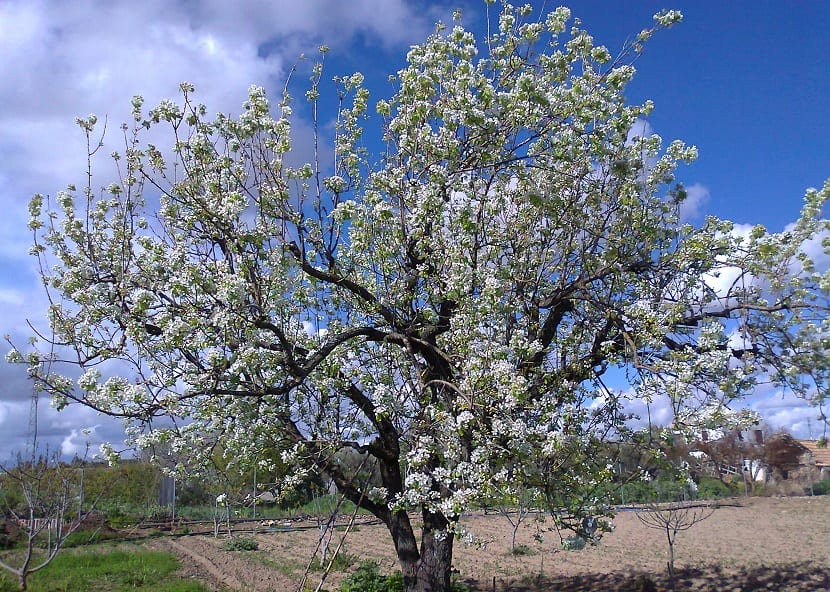
Pear is one of the fruits that are most consumed and most appreciated by consumers because they are very nutritious, delicious and juicy. It is highly demanded in many forms, both for desserts and for sweets and fruit cocktails. Therefore, we are going to dedicate this post to the tree that produces the pear: the pear tree.
Do you want to know everything about the pear tree?
Origin of the pear tree
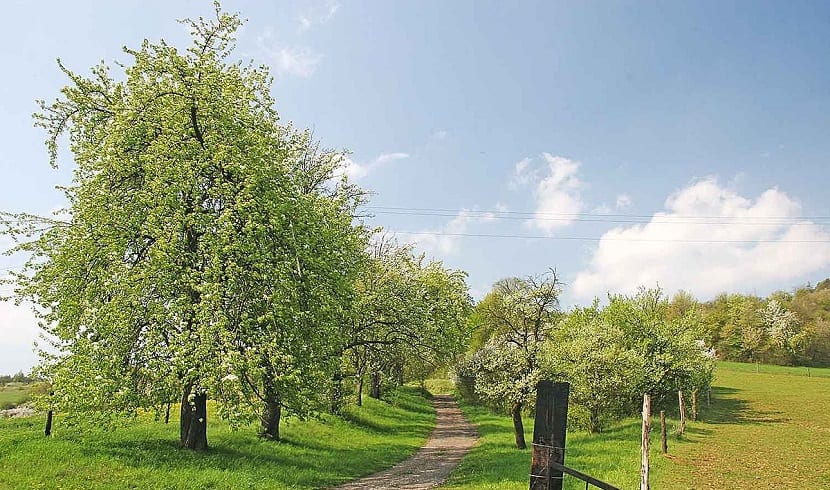
The pear tree belongs to the genus Pyrus and to the Rosaceae family. The pear tree shares a family with the apple tree (hence the pear and apple are always together). There are many varieties of pear trees that are known and each type has its own special characteristics. At first, the pear tree arose in the temperate climates of Europe and Africa, where its cultivation spread thanks to the use and commercialization of its fruits. As pears became more and more known, demanded and consumed, the seeds of the pear tree were also traded and spread more and more.
Today the varieties of pear that are known are the result of selection processes that have been carried out between wild pear trees and Asian ones. They no longer have anything to do with those pear trees in Europe and Africa.
Pear tree characteristics
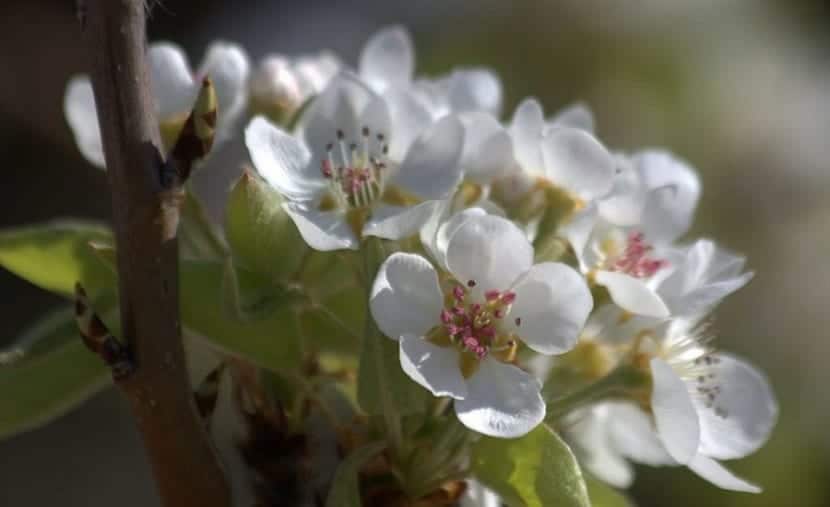
Pear trees are normally medium-sized trees that can grow to between 10 and 20 meters in height. Depending on the variety they can go between that height. The pear tree is a tree that it has spread throughout the world, although mainly, these trees need more humid and cooler climates, but with quite warm summers. In nature, the most appropriate areas for pear trees are those areas that are open, where the soil has good drainage. If you want to grow pear trees, you should avoid all areas with closed valleys.
As for the roots of the pear tree, they are woody and deep. Its trunk is straight and its bark is gray-brown and cracked. The tree's crown is normally tall and narrow with oval-shaped leaves that appear alternately on the branches. One thing about the leaves is that they are green on the upper side and their petioles are yellowish.
When the pear tree blooms, its flowers look like clusters that are born in different parts of an axis. They normally have 5 white petals and their stamens are more purple in color. A curiosity about pear flowers is that they are hermaphrodites.
The fruit of the pear tree
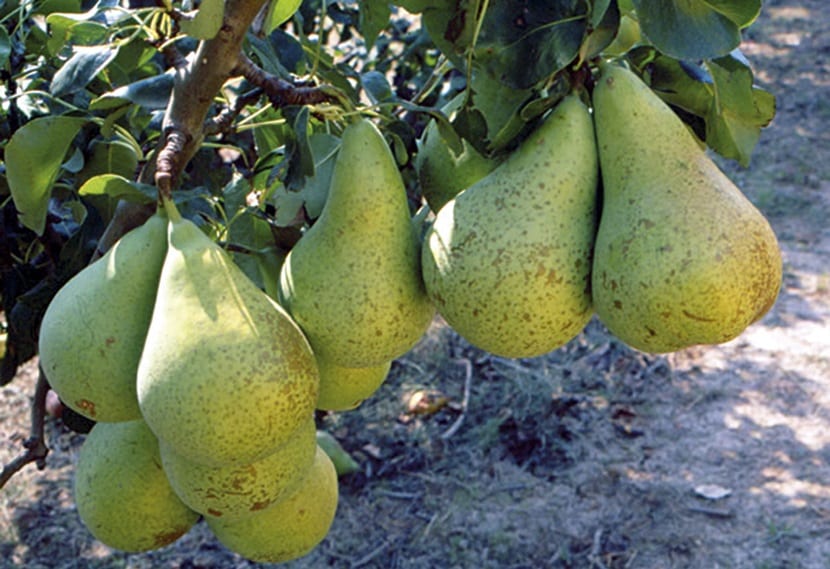
The pear is the fruit of the pear tree and is, along with the apple, one of the most consumed and demanded fruits in the world. They are used in fruit cocktails, juices, sweets, etc. The pear is very famous and appreciated by everyone. They are round in shape and large, juicy and fleshy. Usually, the most consumed variety is the one that produces pyrus communis, one of the most widespread varieties of the pear tree.
Pear is also widely consumed and appreciated for its delicate flavor and for its nutritional properties. When we eat pear we ingest and introduce into our body vitamins of the complex B-B1, B2 and niacin. All this helps us regulate the nervous system, improves our digestive system and helps us strengthen the heart muscle. In addition, it also has vitamins A and C, apart from minerals such as calcium, phosphorus, magnesium, potassium and copper.
When pears are produced and intended for consumption, the main thing is to eat them as desserts. It is also sold canned in syrup or with a light cooking that is used as a preparation of desserts and compotes. They are also used in some types of sweets and cakes and it is used to make jams.
How the pear tree is grown

As mentioned before, the pear tree is a tree that prefers temperate climates, more humid and cool, although with warmer summers. Therefore, if we want to grow it, we have to take into account some basic conditions. The pear tree is a tree capable of reaching to withstand frosts down to -20 degrees in the dormant season. However, if the frost occurs in spring, when it is in flowering season, the pear tree will not withstand the frost and will die. That is why, to grow the pear tree, we have to take into account some of the environmental conditions of the place where we are going to do it.
As for the soil in which we are going to grow the pear tree, it has to be well fertilized, from organic fertilizer made with a combination of manure, potassium and phosphorus. The soil that is most suitable for growing pear trees are those that are more clayey because they have good drainage. Water drainage is vital for the survival of the pear tree, So if we grow the tree in a loamy soil whose porosity and permeability is not very good, it will have a water deficit even if we water it frequently. Due to the characteristics of its roots, deep soils with a basic pH of 6 or 7 are recommended.
Once we have planted the pear trees, we must water about 10 liters of water for each plant for the first time. Subsequently, the irrigation must be regular but not excessive. This is because pear trees They are plants that are very sensitive to both droughts and excess humidity. If the tree has experienced irregularities in the amount of water available during its growth, it will produce smaller fruits than usual.
Reproduction and maintenance of pear trees
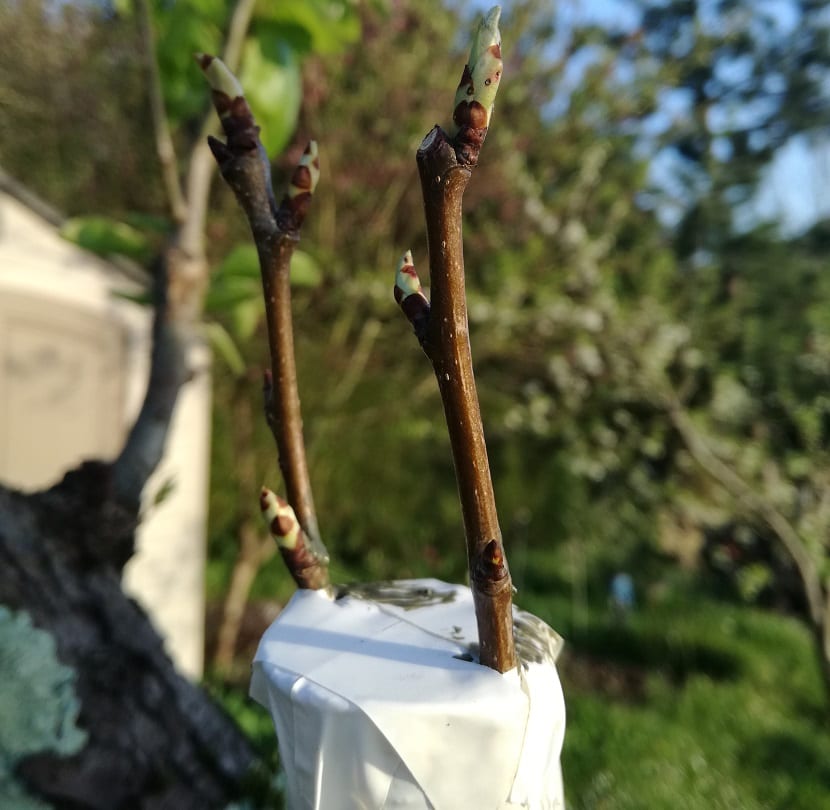
If we want to reproduce the pear trees we have to do it from bud grafting that will have to be done in autumn. These grafts must have quinces or other pear trees as patterns so that they work well and can reproduce. It is necessary that, when we do the graft, a distance of 3 meters is respected between each planted tree so that the branches do not invade each other's space or have excessive competition for resources.
Once we place our graft it is necessary to cover the base with an organic mulch to help its growth. Nowadays the pear tree is reproduced in crops in this way, since it is much faster and more efficient. Reproduction methods such as cuttings or traditional pear seed planting are no longer used.
Now let's move on to harvesting the fruits. We have to take into account something very important. The pears do not have to be ripe to pick them, but the pear harvesting must begin as soon as they begin to vary the color of their shell from dark green to light. Once there, it is possible to start picking the pears. Another indicator to know if the pear can be harvested now is by picking the fruit, twisting it gently and slowly and if it comes off easily, it is because they are ready for harvest.
For the maintenance of the pear tree we have to carry out pruning that will have to respect the initial pruning of the young trees. This initial pruning is done when the height of the tree reaches 80 centimeters. It is then when it has to stand out in such a way that it favors the growth of the two main branches. As the two main branches develop, we will perform the may on the shoots of the secondary branches. Pruning is also carried out more regularly on trees that are already 3 or 4 years old when the harvest is finished. With this pruning we are promoting the health of the plant and also strengthen the next flowering.
The best known pear varieties in Spain are:
- whitish
- Ercolini
- Lemon tree
- Good Christian William's
- Conference
- Good Luisa of Arranches
- Dean of Elections
- Bartlett
Pear tree pollination
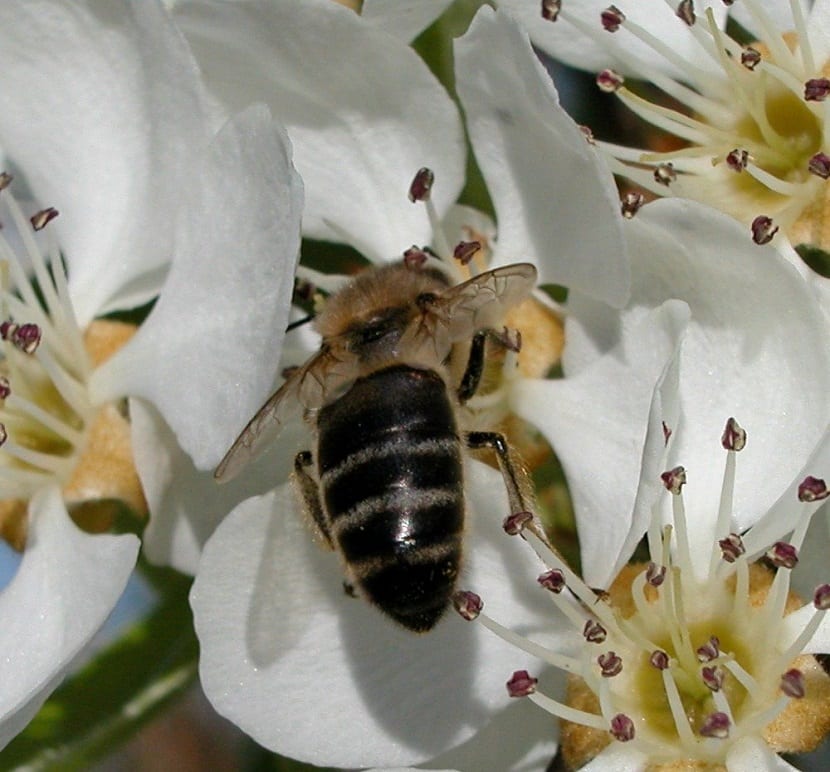
The pear tree is pollinated by insects through a cross pollination. Pollinators are necessary for their natural reproduction, since they are not completely self-fertile. Although pear trees have a fairly abundant flowering rate, the fruits they generate correspond to less than 20% of the flowers. Because the most suitable pollination is the crossed one, we must have two different pear trees that are compatible. Most varieties of pear trees require a second specimen to pollinate well.
Requirements for the pear tree plantation
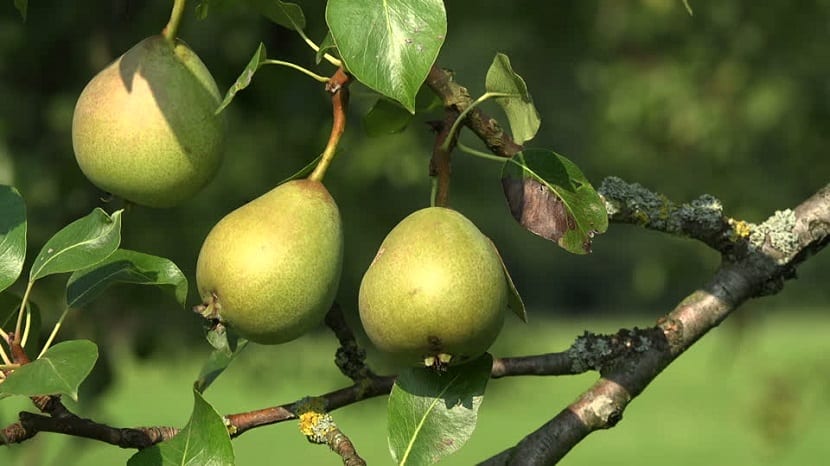
As a summary we list the necessary requirements for a good pear tree plantation with assured success:
- The pear tree requires a temperate, sunny, humid, cool climate that does not have frosts in spring.
- The soil must be clayey and porous for proper drainage. It can also grow in sandy soils.
- The optimal graft of the pear tree is with a quince pattern, since it gives rise to smaller trees that facilitate their collection and induce faster flowering.
- The pear is harvested when it changes color from dark to light green, or when twisting it easily detaches.
With this information we can learn more about pears and pear trees and be able to grow our own fruits.
I have a pear tree that is approximately 20 years old, the fruit does not develop, they are very small, is it due to irrigation? How often would irrigation be advisable? the area where I live is sandy
I await your comments,
Thank you
Hi Fabiana.
It may be the irrigation, or perhaps the lack of fertilizer. Or both.
I would recommend you take some compost of organic origin in spring and summer so that it could bear better fruit.
Greetings.
excellent !!… it is about learning… nobody was born knowing therefore all assimilated teaching and accumulated experience, it must be transmitted from generation to generation… thank you very much.
Thanks to you, Raul.